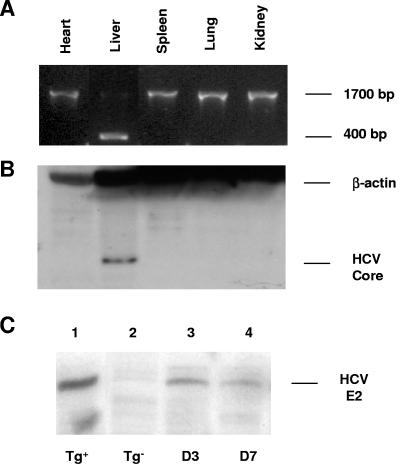FIG. 2.
Hydrodynamic induction of HCV structural transgenes with a nonviral vector, pNLSCre. (A) Recombination of the HCV transgene took place in the liver following hydrodynamic injection of 50 μg pNLSCre. The 400-bp fragment was detected by PCR with primers P1 and P3 (Fig. 1). (B) High levels of HCV core expression in the liver were detected by Western blotting with an anti-core MAb, followed by HRP-conjugated anti-mouse antibody. Shown are results for a representative HCV transgenic mouse 10 days following pNLSCre injection. (C) HCV E2 expression in the liver at day 3 (lane 3) and day 7 (lane 4) postinduction was detected by Western blotting with an anti-E2 polyclonal Ab, followed by an HRP-conjugated anti-goat IgG. A constitutive HCV transgenic (Tg) mouse (lineage 139) (lane 1) and a nontransgenic mouse (lane 2) were used as positive and negative controls, respectively.

